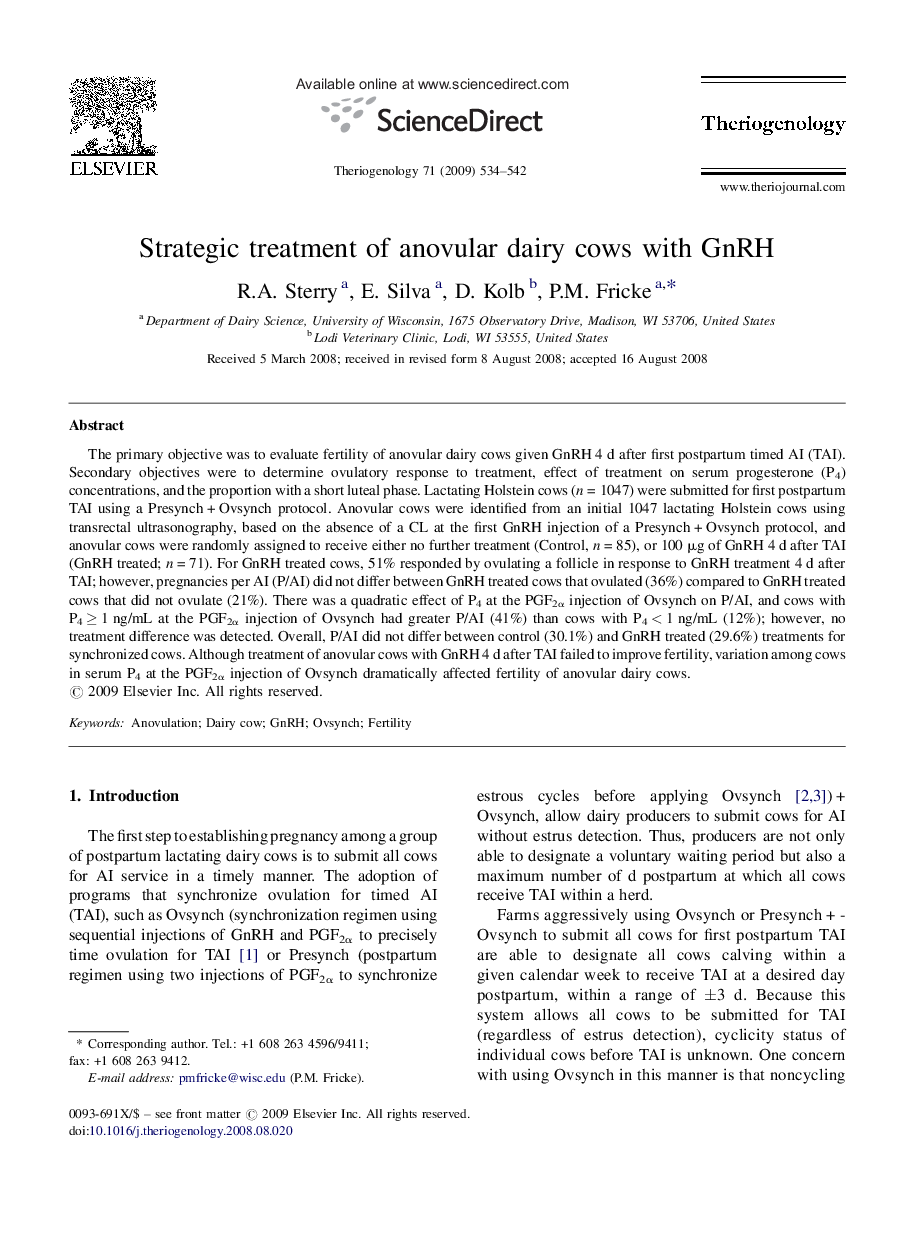| Article ID | Journal | Published Year | Pages | File Type |
|---|---|---|---|---|
| 2096099 | Theriogenology | 2009 | 9 Pages |
The primary objective was to evaluate fertility of anovular dairy cows given GnRH 4 d after first postpartum timed AI (TAI). Secondary objectives were to determine ovulatory response to treatment, effect of treatment on serum progesterone (P4) concentrations, and the proportion with a short luteal phase. Lactating Holstein cows (n = 1047) were submitted for first postpartum TAI using a Presynch + Ovsynch protocol. Anovular cows were identified from an initial 1047 lactating Holstein cows using transrectal ultrasonography, based on the absence of a CL at the first GnRH injection of a Presynch + Ovsynch protocol, and anovular cows were randomly assigned to receive either no further treatment (Control, n = 85), or 100 μg of GnRH 4 d after TAI (GnRH treated; n = 71). For GnRH treated cows, 51% responded by ovulating a follicle in response to GnRH treatment 4 d after TAI; however, pregnancies per AI (P/AI) did not differ between GnRH treated cows that ovulated (36%) compared to GnRH treated cows that did not ovulate (21%). There was a quadratic effect of P4 at the PGF2α injection of Ovsynch on P/AI, and cows with P4 ≥ 1 ng/mL at the PGF2α injection of Ovsynch had greater P/AI (41%) than cows with P4 < 1 ng/mL (12%); however, no treatment difference was detected. Overall, P/AI did not differ between control (30.1%) and GnRH treated (29.6%) treatments for synchronized cows. Although treatment of anovular cows with GnRH 4 d after TAI failed to improve fertility, variation among cows in serum P4 at the PGF2α injection of Ovsynch dramatically affected fertility of anovular dairy cows.
